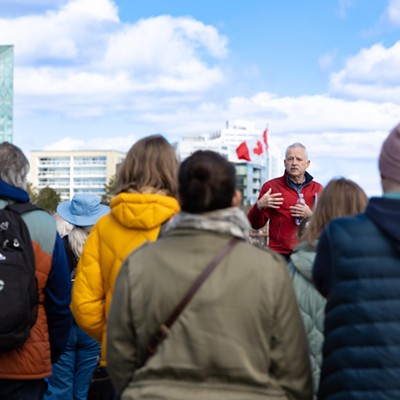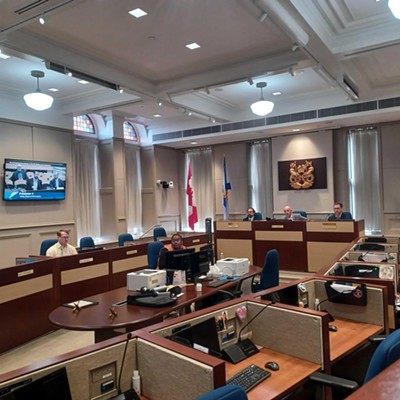To the editor,
Your recent editorial respecting proposed harbour crossings, Northwest Arm bridges, general traffic woes and questionable decisions of past authorities brings back memories. I do not specifically recall the 1974 resolution of Halifax city council of which you wrote, but I was a 20-something alderman on that Halifax city council.
In 1974, the city had just annexed mainland Spryfield and surrounds. The pressure on the rotary was a huge problem then. Downtown, Scotia Square had recently been constructed and the traffic engineering department had just built the Cogswell interchange in response to traffic congestion in our new modern city. That interchange was the pride of the bureaucracy, a shining piece of municipal art. That's the bad news. The good news is that, unknowingly, it mothballed 16 acres of downtown land owned by the HRM, now available for world-class development. It's HRM's own version of the Crown's Waterfront Development Corp. When demolished, every care must be taken to plan it properly; it's a once-in-a-lifetime opportunity for Halifax.
That 1974 council came within a hair-length of demolishing two old stone buildings on the waterfront (now the Historic Properties). The pressure was on council to widen Lower Water Street to hook up to a proposed Barrington Street expressway, through the new Cogswell interchange and north to the new McKay bridge. All of the properties on the east side of Barrington in this area had been expropriated and demolished by the previous council, including Africville. Imagine some developer wanting to put offices and shops in those two old pigeon traps. Kicking and screaming against that recommendation, the 1974 council refused the demolition request, effectively rendering the interchange ineffective.
At the time, we were in a race against Moncton for which city would become the de facto capital of the maritimes. Moncton had the Eaton Distribution Center, CN Maritime HQ, and a new hotel and office complex. Halifax had Scotia Square, the Cogswell interchange and a tired old port waterfront. But we were in that race to win.
The provincial Department of Justice agreed to build a new courthouse at the ferry terminal. The Bank of Montreal and Royal Bank buildings had just been completed and TD Bank and CIBC buildings were in the permit stages. The Maritime Museum was being proposed on the ancient AM Smith and Burns Fisheries properties. MTT was building a tower next to Government House on Barrington Street. The RNSYS property at the tip of the peninsula at Point Pleasant was demolished to make way for the something new called a container pier.
Then, in the absence of a wider Lower Water Street, city council was encouraged by traffic gurus to consider the widening of Barrington Street as a method to feed the Cogswell interchange. This, of course, would have meant the purchase and demolition of some key Barrington Street properties in the central business district, namely the block that is now the Delta Hotel, Granville Street Mall and the NSCAD University campus. That 1974 council never bought into that idea either.
Thirty-three years later, the Armdale rotary, the Cogswell interchange and a narrow Lower Water Street still exist, along with the requisite traffic woes. And yes, I agree with you: we're lucky the Arm bridge never happened.
By Robert A. Stapells














